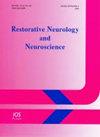尿崩症与人体像植物一样解离水分子的不可思议的能力:病例报告
IF 1.6
4区 医学
Q4 NEUROSCIENCES
引用次数: 0
摘要
中枢性尿崩症(CDI)是影响下丘脑神经垂体系统的几种情况的结果。尿崩症是一种由于抗利尿素(AVP)缺乏而排出大量稀尿(多尿)的疾病[中枢性尿崩症(CDI)]。这些肥胖的CDI患者接受去氨加压素治疗,并根据体重测量调整每日饮水量;但控制水分平衡是极其困难的,这些患者的发病率和死亡率都很高。然而,黑色素解离水分子的内在特性的发现,标志着中枢性尿崩症患者的诊断、研究和治疗的前前后后。研究真黑素通常被认为是一种有趣的经历,尽管有时令人沮丧。直到2002年我们在一项从1990年开始到2002年结束的观察研究中发现了真黑素消散它所吸收的辐射的分子机制(水解离),我们才知道它。工作的假设是试图将进入和离开视神经的血管的解剖特征与世界上失明的三种主要原因联系起来。这项研究让我们认识到人体有一种意想不到的能力,即通过水分子的解离,将太阳光的能量转化为化学能,就像在植物中一样。本文章由计算机程序翻译,如有差异,请以英文原文为准。
Diabetes Insipidus And The Unsuspected Capacity Of Human Body To Dissociate The Water Molecule, Like Plants: Case Report
Central diabetes insipidus (CDI) is the result of several conditions that affect the hypothalamicneurohypophysis system. Diabetes insipidus is a disease in which large volumes of dilute urine (polyuria) are excreted due to vasopressin (AVP) deficiency [central diabetes insipidus (CDI)]. These adipsic CDI patients are treated with desmopressin and adjusting the amount of daily water intake based on body weight measurement; but controlling the water balance is extremely difficult, and morbidity and mortality are shown to be high in these patients. However, the discovery of the intrinsic property of melanin to dissociate the water molecule marks a before and after in the diagnostic, study, and treatment of patients affected by Central diabetes insipidus. Working on eumelanin has usually been regarded as an intriguing, though sometimes frustrating experience. The molecular mechanism by which eumelanin dissipates the radiation it absorbs was not known until we discovered it (water dissociation) in 2002, during an observational study that began in 1990 and ended in 2002. The working hypothesis was to try to correlate the anatomical characteristics of the blood vessels that enter and leave the optic nerve and the three main causes of blindness in the world. This study allowed us to identify the unsuspected capacity of the human body to transform the energy of sunlight into chemical energy, through the dissociation of the water molecule, as in plants.
求助全文
通过发布文献求助,成功后即可免费获取论文全文。
去求助
来源期刊
CiteScore
5.40
自引率
3.60%
发文量
22
审稿时长
>12 weeks
期刊介绍:
This interdisciplinary journal publishes papers relating to the plasticity and response of the nervous system to accidental or experimental injuries and their interventions, transplantation, neurodegenerative disorders and experimental strategies to improve regeneration or functional recovery and rehabilitation. Experimental and clinical research papers adopting fresh conceptual approaches are encouraged. The overriding criteria for publication are novelty, significant experimental or clinical relevance and interest to a multidisciplinary audience. Experiments on un-anesthetized animals should conform with the standards for the use of laboratory animals as established by the Institute of Laboratory Animal Resources, US National Academy of Sciences. Experiments in which paralytic agents are used must be justified. Patient identity should be concealed. All manuscripts are sent out for blind peer review to editorial board members or outside reviewers. Restorative Neurology and Neuroscience is a member of Neuroscience Peer Review Consortium.

 求助内容:
求助内容: 应助结果提醒方式:
应助结果提醒方式:


